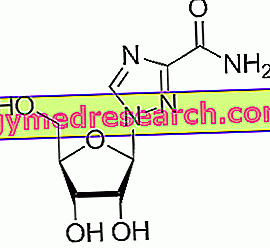What are
In aesthetic medicine, the filler is an injectable substance in the dermis or in the subcutaneous tissue to correct skin imperfections, retouch facial blemishes such as wrinkles or scars, and restore lost volumes.

Indications
Therefore aimed at skin rejuvenation, filler injections are innovative and effective alternatives - or a valid support - to plastic surgery.
Filler bites are indicated in the following circumstances:
- Fill and level wrinkles around the eyes (the so-called crow's feet) and the mouth;
- Increase / reshape the volume of thin lips;
- Correct the nasolabial furrows;
- Shaping the shape and volume of cheekbones, chin and forehead;
- Filling folds and depressions typical of aging;
- Eliminate scars left by acne or surgery.
Ideal features
What features should ideal fillers possess?
Ideal fillers should:
- Guaranteeing consistent, predictable and natural results;
- Being economic;
- To be painless;
- Be safe and hypoallergenic;
- Be free of side effects;
- Be suitable for all categories of patients;
- Guarantee a long-lasting filling and rejuvenation effect;
- Cost too little.
Unfortunately, ideal fillers do not exist, however, given the high demand for these particular aesthetic treatments, research in this field is always in constant evolution.

Types of fillers
For more information: Types of Fillers
The fillers are not all the same: the boom in requests in the last decade has led scholars to look for increasingly innovative, effective and safe fillers. The hyaluronic acid filler is certainly the most appreciated to combat wrinkles and moisturize the skin in depth, while ensuring a completely natural "soft-lifting" effect. Also the collagen fillers are filling substances rather coveted and required in the field of aesthetic medicine; in particular, collagen punctures are indicated in the increase of the volume of lips and in the treatment of surgical scars or left by acne. Both collagen and hyaluronic acid fillers belong to the category of fillers defined as " resorbable ", since the body is able to slowly reabsorb them over time.
Then there is another category of fillers: that of the so-called synthetic fillers . These fillers, in turn, are divided into:
- Partially synthetic fillers, in other words, semi-permanent .
- Fully synthetic, or permanent fillers that are able to volumize cheekbones, chin and lips by inserting the under-skin of real non-resorbable prostheses.
Finally, some dermal fillers are used as a support to other procedures, such as botulinum injections or plastic surgery.
Curiosity
The entry of fillers into aesthetic medicine dates back to about 50 years ago, when the injectable substances to mask the signs of aging were still constituted by dangerous silicones oils. The use of silicone oil fillers in this field of aesthetics has been banned around the eighties of the twentieth century (and still is).
Before treatment
Injection of a filler is a relatively simple aesthetic medicine treatment that, if done well, can lead to excellent results.
Before undergoing filler injections, however, it is necessary to carry out a preliminary interview with the specialist doctor. During this interview, the doctor will evaluate the type and severity of the problem that you want to treat and - based on your needs - will indicate to the patient which type of filler is best to use.
At the same time, the doctor will have to investigate the patient's general health, in order to identify the presence of any contraindications to the execution of the injections.
In the event that the specialist consents to the administration of the filler, it will provide the patient with all the necessary indications and will indicate which behaviors to follow before undergoing the treatment.
Furthermore, for some types of fillers (such as, for example, collagen fillers), in order to avoid the onset of allergic reactions, the doctor may decide to carry out a preliminary intradermal test . One proceeds by inoculating a small amount of the substance in the forearm, analyzing, in the following 24-48 hours, the way in which the skin responds. In the case of a negative reaction (the analyzed skin is not red or irritated), proceed with a second control test of the same filler on the other forearm. Only if the second test is also negative, you can proceed with filler injections on the face.
execution
How to make filler injections
Since this is not an invasive procedure, filler injections are performed as a day hospital and generally do not require any type of anesthesia.
However, depending on the area to be treated and in the case of particularly sensitive patients, the doctor may decide to administer local anesthetic drugs before performing the injection.

However, the fillers are always injected with pre-filled syringes equipped with extremely thin needles, so as to cause the least possible pain and deposit the right dose of product. Furthermore, the needle is generally inserted just a few millimeters below the superficial layer of the dermis: in this way, it is possible to obtain an excellent rejuvenating effect, at the same time ensuring an (almost) painless treatment.
After treatment
In the 24-48 hours following the injection of fillers, the appearance of side effects such as redness, swelling and ecchymosis in the treated area is a phenomenon to be considered normal. In any case, these symptoms should resolve spontaneously in a short time.
However, as a rule, normal daily activities can be resumed immediately.
Side effects
As mentioned, the appearance of some minor side effects in the first few days following the injection of fillers is to be considered an almost normal phenomenon. In detail, these side effects consist of:
- Formation of small - even if evident - skin signs;
- Redness;
- edema;
- Hematomas and ecchymoses;
- Rashes.
Fortunately, in the majority of cases, the aforementioned side effects are completely reversible within a few days.
However, there is also the possibility - albeit rare - that injections of fillers cause other undesirable effects, such as:
- Hyperpigmentation of the treated area;
- Formation of subcutaneous nodules;
- Intensification of herpes episodes (patients predisposed to Herpes virus infections, in fact, following injections of fillers, are more exposed to the appearance of new herpetic manifestations).
Finally we also mention the possible serious adverse reactions which, generally, occur following injections of permanent fillers:
- Abscesses;
- Bacterial infections;
- Granulomas from fillers;
- Fibrous from fillers;
- Compression of nerve endings;
- Localized tissue necrosis.
Not to be forgotten, then, the possibility of the onset of allergic reactions in sensitive individuals. However, as mentioned, in order to overcome this problem, the doctor generally carries out the above described preliminary intradermal test.
In more serious cases, however rare, filler injections can cause unpredictable and very serious adverse reactions, such as abscesses, local necrosis (death of tissue), hives and vasculitis (inflammation of blood vessels).
Results and Benefits
The extraordinary advantage of fillers is the predictability of the result: in fact, the soft-lifting effect of "stretching" of wrinkles or filling of volumes (surprisingly effective) is rather predictable and immediate, and ensures a completely natural facial expression. Unlike plastic surgery, this aspect is very positive and appreciated, since it gives the patient a certain tranquility on the final result.
The natural results obtainable with filler injections, combined with the non-invasive treatment and the possibility of immediately resuming all normal activities, certainly represent the main advantages of this aesthetic treatment.
Disadvantages
If, on the one hand, the natural results that do not give artificiality to the face or body represent the main advantages of the fillers, on the other hand, their duration can represent a real disadvantage.
First of all, it is important to point out that the duration of the rejuvenation effect guaranteed by the fillers is heavily influenced by the patient's lifestyle (smoking, stress, degree of physical activity, exposure to UV rays or atmospheric pollutants, etc.), from type of filler chosen and from the area in which the substance is injected. In fact, except for the injections of permanent fillers (not reabsorbable), the blemish that has been corrected by the filler tends to reappear 3-10 months after the injection.
The much sought-after return to youth of "no longer adolescent" women, soon turns out to be too short a dream, so much so that the patient is prompted to request a further filler injection as soon as the effect of the first session vanishes.
Another important aspect - which in some ways can be considered a real disadvantage - is represented by the cost of each treatment with the filler. Like any self-respecting medicine, the quality-price ratio of a particular type of filler is an extremely important parameter that weighs heavily on the choice of treatment. However, it is important to emphasize that patients, terrified by the inexorable advancement of the biological clock, tend not to pay attention to expenses in order to obtain a more rejuvenated self-image of 5 or 10 years. Precisely for this reason, the large, astute and calculating companies - as well as the Medici of Beauty - tend to keep the costs of products at rather high levels, since they are aware of the "addiction" (so to speak) from filler effect. The cost of the treatment is influenced both by the area to be treated and by the chosen filler. As we will see in the course of the article, in fact, there are more types of fillers, with different characteristics and different costs. In general, the price ranges from 300 to 600 euros per session. Be careful, however, to always rely on surgeons or experienced, specialized and competent aesthetic doctors, able to better address the patient in choosing the filler that best suits his needs.
Contraindications
Before proceeding with filler injections, the patient's state of health must be ascertained. In fact, the filling substances cannot be inoculated under the skin in the following circumstances:
- Established or presumed allergy to the filler;
- Coagulopathies (alteration of blood coagulation);
- Collagenopathies (autoimmune diseases of collagen and connective tissue, involving the joints. For example: systemic lupus erythematosus, Sjögren's syndrome, ankylosing spondylitis);
- Pregnancy in place;
- During breastfeeding;
- Herpetic infection (from Herpes) in progress;
- Autoimmune dermatological disorders.



